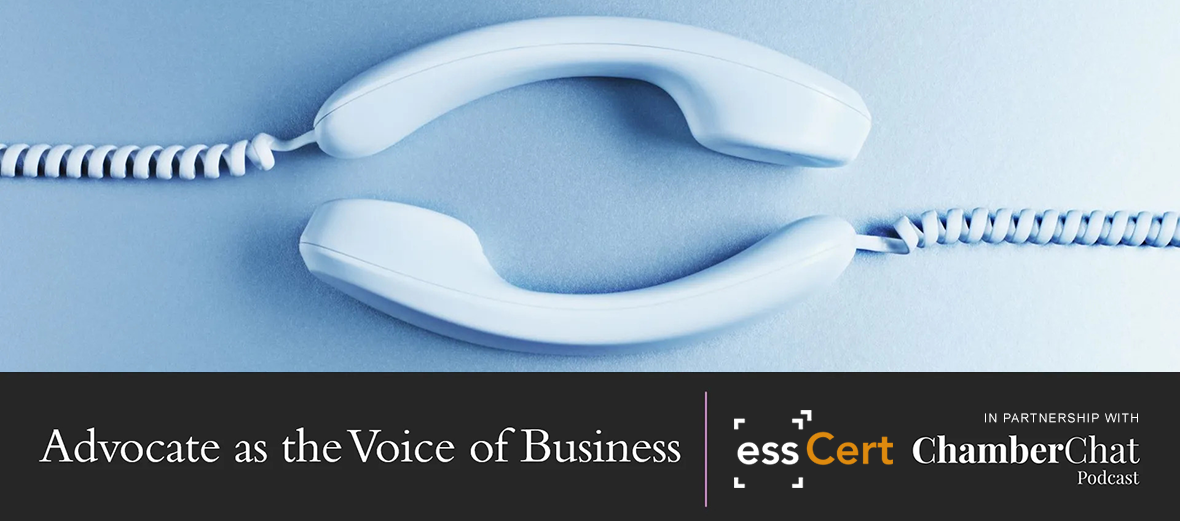Advocate as the Voice of Business

By Brandon Burton, in partnership with Chamber Chat Podcast
Estimated reading time: 4 minutes
You Have Seen One Chamber
As the old saying goes “if you have seen one chamber, you have seen one chamber.” I understand that every community has different needs. They are different sizes and have different problems. They also have different things that make them uniquely great. I often wonder about the confusion of business owners who belong to multiple chambers.
Hypothetically, a business could be a member of a larger, more robust chamber that has multiple events each week and several ways to educate and market their business members. This same business (maybe a secondary location) could also be a member of a more rural chamber who has a totally different vibe. Both chambers are doing what they feel is best for their community. However, this hypothetical chamber member is having a very different experience with each of these organizations.
Common Member Experience
One way that every chamber could offer a similar experience for each of their members is through advocacy. Many chambers claim to be the voice of business for their community but what does that mean? Do their members know what that means for their business?
Some chambers tend to shy away from jumping into the advocacy arena for fear of offending people. They may worry about losing funding from a city contract or a large sponsor. Some worry about losing members because of the chambers stance on a topic.
Advocacy Creates the Voice of Business
If chambers could agree to represent the voice of business in their communities by promoting pro-business candidates and policies, then their members would better understand the value that they get from their chamber. They would understand why the chamber is branded as the voice of business.
During election season, I have seen chambers invite local candidates to be interviewed on the chamber’s podcast. This provides a platform for residents to hear the ideas each candidate offers up, especially as it relates to business in their community. (If you are interested in starting a podcast for your chamber, see my free resources at chamberchatpodcast.com/pivot.)
I really like the idea of chambers in the same region banding together to support certain causes. This way as you advocate at your county or state levels, you can leverage the numbers of businesses who feel a certain way about proposed legislation that would impact their business. You can do this type of advocacy on your own, but a regional effort carries a much larger impact. This could even be taken to a national level as you bring chambers together across your state, province, or territory.
Advocacy Examples
I recently did a podcast interview with Marc Cohen, Chief of Staff at the Greater Rochester Chamber in New York. Marc offered up a great tip that may serve you well with your advocacy efforts. He suggested rather than trying to meet with the elected official, it is very effective to connect with a member of their staff instead. It is often easier to get a meeting with one of the staff members than it is to sit down with the elected official. If you can successfully create a relationship with the staff member, then you can create a great advocate on the inside.
When I visited with Roy William and Brad Hicks on Chamber Chat Podcast, they both mentioned the great value of their chambers having political action committees (PACs). Setting up a PAC requires more commitment and legal help but it can also become another source of revenue for your organization.
Here is a list of some ideas of ways to incorporate advocacy at your chamber. You may be doing some of these things already, and this list is not exhaustive by any means:
- Learn about proposed legislation, taxes, regulations, or expiring regulations
- Talk to your business community/take polls about the expected impact of these proposals
- Look up who all of your local, county, and state elected officials are and start introducing yourself and your chamber to these leaders and explain who you represent. Write them each an email of encouragement and optimism of working together with them to represent their constituents in your community
- Coordinate letter writing and phone campaigns to show support or displeasure for certain proposals
- Organize or join a group on a regional or state level with other chambers to leverage your numbers
- Interview candidates in a forum to share their views to inform voters
- Endorse pro-business candidates and policies
- Consider creating or supporting a political action committee
Summary
Your chamber does not need to set up a PAC to make an impact advocating for the businesses in your community. But you should be doing something to make the voice of business heard in your area. I would encourage you to not let fear deter you from standing up for what is right for your business owners, their employees, and their families. Hold public forums, conduct interviews on your chamber’s podcast, YouTube, or Facebook page. Conduct polls to get real feedback from your business community. All of this will allow you to collect the information you need to help pro-business policies and candidates thrive in your community.

